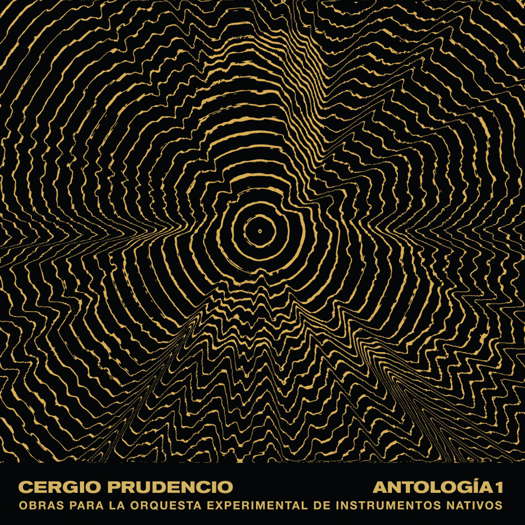- Orphée et Eurydice
- Carl Reinecke
- Inzegneri
- Scottsdale
- Igor Stravinsky
- Starker
- Byzantium
- Michel Merlet: Prélude-Interlude-Postlude
 FEEDBACK: She said WHAT? Read what people think about our Classical Music Daily features, and have your say!
FEEDBACK: She said WHAT? Read what people think about our Classical Music Daily features, and have your say!
 VIDEO PODCAST: New Recordings - Find out about Adrian Williams, Andriy Lehki, African Pianism, Heinrich Schütz and Walter Arlen, and meet Stephen Sutton of Divine Art Recordings, conductor Kenneth Woods, composer Graham Williams and others.
VIDEO PODCAST: New Recordings - Find out about Adrian Williams, Andriy Lehki, African Pianism, Heinrich Schütz and Walter Arlen, and meet Stephen Sutton of Divine Art Recordings, conductor Kenneth Woods, composer Graham Williams and others.

Quite Astonishing
KEITH BRAMICH listens to the sound of Andean highland instruments used in new ways
'... surprisingly varied, unusual and different ...'
My knowledge of the Andes, the world's longest continental mountain range, connecting seven South American countries, is limited to what I've read, seen in photos and heard first-hand when my brother Mark Bramich returned from Bolivia with stories and photos from Sue Savage's 1999 Welsh Quimsa Cruz climbing expedition. They had travelled about twelve hours by jeep from La Paz to the ex-mining village of Viloco and then a day-and-a-half on foot to discover several new climbing routes. But as for Bolivian music, the map in my head has just become vastly clearer.
Bolivian composer and establishment figure Cergio Prudencio was born in La Paz in 1955. He is currently the Bolivian government's 'Vice Minister of Interculturality' in the rather complex and frighteningly named Ministry of Cultures, Decolonization and Depatriarchalization. Actually this is connected with diversity and is, as I understand it, really just concerned with different kinds of people having a dialogue with each other.
Prudencio's mission as a musician appears to be to apply this concept to the indigenous peoples of South America, and to this end he co-founded, in 1980, the Orquesta Experimental de Instrumentos Nativos - the experimental orchestra of native instruments, or OEIN for short - and is now, at the age of sixty-eight, the orchestra's emeritus director.
The purpose of the OEIN is to bring players of traditional highland instruments from the Andean Mountain Range, and in particular, of Aymara traditions, together with contemporary music ideas to produce a new sound world. Prudencio is of the opinion that the character of this sound world and that of the OEIN, is based on three principles of Aymara music. Arca-ira is the sharing or alternation of sounds between two musicians. Tropa is concerned with sound amplification and forming large groups of players. Wakiña refers to the strength of the community.
Listen — Cergio Prudencio: La ciudad (1980)
(BR181 track 8, 10:20-11:12) ℗ 2024 Buh Records :
According to this album's liner notes, the native instruments used by the OEIN include panpipes (sikus), various kinds of flutes (tarkas, mohoceños and pinkillos - mostly aerophones, blown at the end), drums (wankaras, which are large and deep-sounding double-headed cylindrical instruments with a membrane) and seeds. But there are also stringed instruments in the mix.
Listen — Cergio Prudencio: Tríptica (1985-6)
(BR181 track 2, 1:24-2:18) ℗ 2024 Buh Records :
Cergio Prudencio's new album on the Buh Records label will be available next month, on 23 February 2024, either as a pair of LPs in a limited edition, or digitally via Bandcamp. The title is Antología 1: Obras para la Orquesta Experimental de Instrumentos Nativos (Anthology 1: Works for the Experimental Orchestra of Native Instruments). It contains a surprisingly varied, unusual and different selection of works created between 1980 and 2015.
Listen — Cergio Prudencio: Cantos funerales (2015)
(BR181 track 9, 0:03-1:00) ℗ 2024 Buh Records :
The different kinds of sounds which OEIN wind players, particularly, can create here is quite astonishing, and Prudencio's new sound world, in my opinion, is actually several quite distinct sound worlds.
Listen — Cergio Prudencio: Cantos insurgentes (2012)
(BR181 track 1, 0:00-0:52) ℗ 2024 Buh Records :
Occasionally I find the results quite scary, particularly on first hearing, as in una frescura antigua que se desplaza (an ancient freshness that moves), the first movement of Prudencio's Otra ciudad (Another city), written in 2012.
Listen — Cergio Prudencio: una frescura antigua que se desplaza (Otra ciudad)
(BR181 track 3, 0:00-0:43) ℗ 2024 Buh Records :
The names of Prudencio's works on this album, such as Cantos insurgentes (insurgent songs), Cantos funerales (funeral songs) and La ciudad (The city) are highly evocative of these expertly crafted creations which celebrate a bringing together of mountain tribes and city life.
Copyright © 15 January 2024
Keith Bramich,
London, UK



